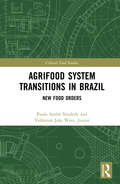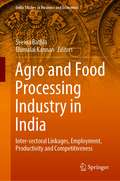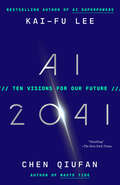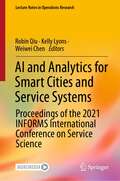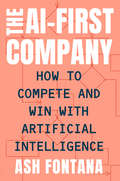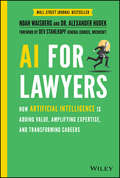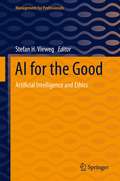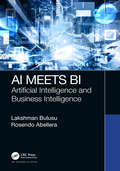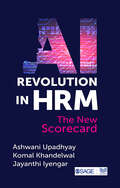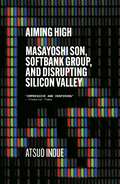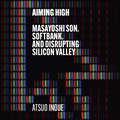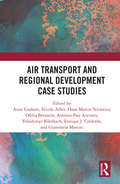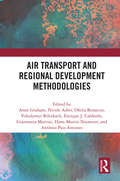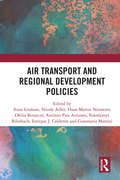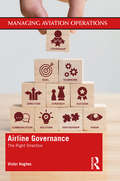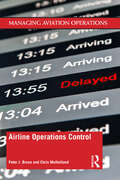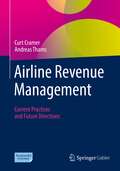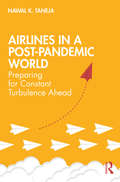- Table View
- List View
Agrifood System Transitions in Brazil: New Food Orders (Critical Food Studies)
by Paulo André Niederle Valdemar João Wesz JuniorThis book explores the agrifood system transitions in Brazil to provide a new understanding of the trajectory of agriculture and rural development in this country. It accentuates the increasing diversifi cation and hybridization of food production and consumption practices throughout history. With a framework that combines convention theory, neoinstitutional approaches and practice theory, this book suggests the concept of “food orders” which represents different arrangements of practices, institutions and sociotechnical artifacts. By exploring the interrelations between these elements, the book looks at six different food orders: industrial, commercial, domestic, aesthetic, civic and fi nancial, in tandem with examples of practices, sectors and territories to understand the dynamics of each one. This aids in understanding the main tendencies of the agrifood sector in such a vast country that, being a major player in global food markets, also affect production and consumption dynamics in several other countries. Besides, this book also seeks to comprehend the current institutional changes in Brazil that may be critical to interpret the global dissemination of populist and autocratic governments. Offering key insights into the contemporary sociology of agriculture and food, this book demonstrates how strengthening democracy and supporting the organization of civil society are major challenges when we think about transition for sustainable food systems.
Agro and Food Processing Industry in India: Inter-sectoral Linkages, Employment, Productivity and Competitiveness (India Studies in Business and Economics)
by Seema Bathla Elumalai KannanThis book provides different facets of India's agro and food processing industry in both organised and unorganised segments. It brings forth the topical issues having potential to accelerate the pace of growth in its employment, investment and productivity and strive for improving the global competitiveness. Using advanced quantitative techniques, it brings new evidences on inter-sectoral (agriculture-industry-services) employment and production linkages, contractual arrangements through Farmer Producer Companies, and subcontracting in the processed food sector. It also throws light on India's comparative advantage in export of primary and processed food products.With rising per capita income, urbanisation, and changing food habits of people, India is increasingly striving to improve productivity and competitiveness in agriculture and manufacturing. A concerted policy focus to accelerate private investment in food processing, largely viewed as a sunrise industry, is expected to contribute to large scale job creation and external trade not only in the manufacturing but also in the agricultural sector. Keeping this in mind, considerable insights are featured in the book at the industry and firm levels due to a significant bearing of technological, tariffs and non-tariff barriers and labour regulations on their trade intensity, employment and efficiency. Containing perspectives from the top agriculture and industry economists in the country, the book will be very useful to researchers, academicians, trade analysts and policy makers.
Ahead of Her Time
by Judy PiatkusInspiring memoir by entrepreneur Judy Piatkus, who launched her startup at a time when mothers were not expected to be businesswomen and grew it into a highly successful international brand. The story of a pioneer of female entrepreneurship, values-led management and the rise of personal development publishing.Judy Piatkus did not come from a monied background and began her career as a secretary after failing to achieve a university place. By the time she founded Piatkus Books from her spare bedroom, she was married with a disabled small daughter and pregnant with her second child. Gradually she learned how to be both a publisher and a managing director and to combine that with her family life as she had become a single mother of three. A lot of mistakes were made but she also got a lot of things right. The company prospered, thanks to the risks Judy took in tackling new subjects in the marketplace and also her approach to running the company, which focused on transparency, honesty and trust and was rewarded by the loyalty of the staff, many of whom worked alongside Judy for upwards of twenty years.Throughout the book Judy describes her learning experience as an entrepreneur, what it really means to run a company, the many triumphs and the pitfalls, what worked and what didn't, how the company learned to reinvent itself through lean times and how it felt to finally strike gold.
AI 2041: Ten Visions for Our Future
by Kai-Fu Lee Chen QiufanHow will AI change our world within twenty years? A pioneering technologist and acclaimed writer team up for a &“dazzling&” (The New York Times) look at the future that &“brims with intriguing insights&” (Financial Times). This edition includes a new foreword by Kai-Fu Lee. A BEST BOOK OF THE YEAR: The Wall Street Journal, The Washington Post, Financial Times Long before the advent of ChatGPT, Kai-Fu Lee and Chen Qiufan understood the enormous potential of artificial intelligence to transform our daily lives. But even as the world wakes up to the power of AI, many of us still fail to grasp the big picture. Chatbots and large language models are only the beginning. In this &“inspired collaboration&” (The Wall Street Journal), Lee and Chen join forces to imagine our world in 2041 and how it will be shaped by AI. In ten gripping, globe-spanning short stories and accompanying commentary, their book introduces readers to an array of eye-opening settings and characters grappling with the new abundance and potential harms of AI technologies like deep learning, mixed reality, robotics, artificial general intelligence, and autonomous weapons.
AI and Analytics for Smart Cities and Service Systems: Proceedings of the 2021 INFORMS International Conference on Service Science (Lecture Notes in Operations Research)
by Robin Qiu Kelly Lyons Weiwei ChenThis book showcases state-of-the-art advances in service science and related fields of research, education, and practice. It presents emerging technologies and applications in contexts ranging from healthcare, energy, finance, and information technology to transportation, sports, logistics, and public services. Regardless of its size and service, every service organization is a service system. Due to the socio-technical nature of service systems, a systems approach must be adopted in order to design, develop and deliver services aimed at meeting end users’ utilitarian and socio-psychological needs alike. Understanding services and service systems often requires combining multiple methods to consider how interactions between people, technologies, organizations and information create value under various conditions. The papers in this volume highlight a host of ways to approach these challenges in service science and are based on submissions to the 2021 INFORMS Conference on Service Science.
The AI-First Company: How to Compete and Win with Artificial Intelligence
by Ash FontanaArtificial Intelligence is transforming every industry, but if you want to win with AI, you have to put it first on your priority list.AI-First companies are the only trillion-dollar companies, and soon they will dominate even more industries, more definitively than ever before. These companies succeed by design--they collect valuable data from day one and use it to train predictive models that automate core functions. As a result, they learn faster and outpace the competition in the process. Thankfully, you don't need a Ph.D. to learn how to win with AI. In The AI-First Company, internationally-renowned startup investor Ash Fontana offers an executable guide for applying AI to business problems. It's a playbook made for real companies, with real budgets, that need strategies and tactics to effectively implement AI. Whether you're a new online retailer or a Fortune 500 company, Fontana will teach you how to: • Identify the most valuable data; • Build the teams that build AI; • Integrate AI with existing processes and keep it in check; • Measure and communicate its effectiveness; • Reinvest the profits from automation to compound competitive advantage.If the last fifty years were about getting AI to work in the lab, the next fifty years will be about getting AI to work for people, businesses, and society. It's not about building the right software -- it's about building the right AI. The AI-First Company is your guide to winning with artificial intelligence.
AI For Lawyers: How Artificial Intelligence is Adding Value, Amplifying Expertise, and Transforming Careers
by Noah Waisberg Alexander HudekDiscover how artificial intelligence can improve how your organization practices law with this compelling resource from the creators of one of the world’s leading legal AI platforms. AI for Lawyers: How Artificial Intelligence is Adding Value, Amplifying Expertise, and Transforming Careers explains how artificial intelligence can be used to revolutionize your organization’s operations. Noah Waisberg and Dr. Alexander Hudek, a lawyer and a computer science Ph.D. who lead prominent legal AI business Kira Systems, have written an approachable and insightful book that will help you transform how your firm functions. AI for Lawyers explains how artificial intelligence can help your law firm: Win more business and find more clients Better meet and exceed client expectations Find hidden efficiencies Better manage and eliminate risk Increase associate and partner engagement Whether focusing on small or big law, AI for Lawyers is perfect for any lawyer who either feels uneasy about how AI might change law or is looking to capitalize on the evolving practice. With contributions from experts in the fields of e-Discovery, legal research, expert systems, and litigation analytics, it also belongs on the bookshelf of anyone who’s interested in the intersection of law and technology.
AI for the Good: Artificial Intelligence and Ethics (Management for Professionals)
by Stefan H. ViewegWhile technology advances at a high pace in the age of machine learning, there is a lack of clear intent and framing of acceptable ethical standards. This book brings together the complex topic of "good" technology in a cross-functional way, alternating between theory and practice.The authors address the ever-expanding discussion on Artificial Intelligence (AI) and ethics by providing an orientation. Pragmatic and recent issues are especially taken into account such as the collateral effects of the COVID19 pandemic. An up-to-date overview of digitization - already a very broad field in itself - is presented along with an analysis of the approaches of AI from an ethical perspective. Furthermore, concrete approaches to consider appropriate ethical principles in AI-based solutions are offered. The book will be appealing to academics, from humanities or business or technical disciplines, as well as practitioners who are looking for an introduction to the topic and an orientation with concrete questions and assistance.
The AI Marketing Canvas: A Five-Stage Road Map to Implementing Artificial Intelligence in Marketing
by Raj Venkatesan Jim LecinskiThis book offers a direct, actionable plan CMOs can use to map out initiatives that are properly sequenced and designed for success—regardless of where their marketing organization is in the process. The authors pose the following critical questions to marketers: (1) How should modern marketers be thinking about artificial intelligence and machine learning? and (2) How should marketers be developing a strategy and plan to implement AI into their marketing toolkit? The opening chapters provide marketing leaders with an overview of what exactly AI is and how is it different than traditional computer science approaches. Venkatesan and Lecinski, then, propose a best-practice, five-stage framework for implementing what they term the "AI Marketing Canvas." Their approach is based on research and interviews they conducted with leading marketers, and offers many tangible examples of what brands are doing at each stage of the AI Marketing Canvas. By way of guidance, Venkatesan and Lecinski provide examples of brands—including Google, Lyft, Ancestry.com, and Coca-Cola—that have successfully woven AI into their marketing strategies. The book concludes with a discussion of important implications for marketing leaders—for your team and culture.
AI Meets BI: Artificial Intelligence and Business Intelligence
by Lakshman Bulusu Rosendo AbelleraWith the emergence of Artificial Intelligence (AI) in the business world, a new era of Business Intelligence (BI) has been ushered in to create real-world business solutions using analytics. BI developers and practitioners now have tools and technologies to create systems and solutions to guide effective decision making. Decisions can be made on the basis of more reliable and accurate information and intelligence, which can lead to valuable, actionable insights for business. Previously, BI professionals were stymied by bad or incomplete data, poorly architected solutions, or even just outright incapable systems or resources. With the advent of AI, BI has new possibilities for effectiveness. This is a long-awaited phase for practitioners and developers and, moreover, for executives and leaders relying on knowledgeable and intelligent decision making for their organizations. Beginning with an outline of the traditional methods for implementing BI in the enterprise and how BI has evolved into using self-service analytics, data discovery, and most recently AI, AI Meets BI first lays out the three typical architectures of the first, second, and third generations of BI. It then takes an in-depth look at various types of analytics and highlights how each of these can be implemented using AI-enabled algorithms and deep learning models. The crux of the book is four industry use cases. They describe how an enterprise can access, assess, and perform analytics on data by way of discovering data, defining key metrics that enable the same, defining governance rules, and activating metadata for AI/ML recommendations. Explaining the implementation specifics of each of these four use cases by way of using various AI-enabled machine learning and deep learning algorithms, this book provides complete code for each of the implementations, along with the output of the code, supplemented by visuals that aid in BI-enabled decision making. Concluding with a brief discussion of the cognitive computing aspects of AI, the book looks at future trends, including augmented analytics, automated and autonomous BI, and security and governance of AI-powered BI.
AI Revolution in HRM: The New Scorecard
by Ashwani Kumar Upadhyay Komal Khandelwal Jayanthi IyengarWith AI being touted as the new kid on the block, the HR function in organizations is witnessing a sea change with the advent of new data-driven analytical processes. Till now HR has been about employees already working within an organization and potential entrants to it. What happens when machines and bots enter the scene? AI Revolution in HRM is all about debunking the conventional wisdom and redrawing the contours of passé management to include machines into its definition. This book discusses the benefit, challenges and applications of AI in the HR function. It also highlights issues in implementation and considers the impact of AI-based HR systems in the organization. Further, the book provides tips and insights on how to deal with the challenges and implementation issues ranging from data privacy to system bias and up-skilling of current employees. It is builds on a wide variety of cases ranging from large global organizations to startups. This book will ensure that HR professionals and general readers fully understand the concepts of AI and its relevance to the HR profession. Equipped with the knowledge of AI-based tools and systems, it will help the HR department make their organizations more vibrant and stable by embracing the developments in AI technology. AI Revolution in HRM will be an insightful and helpful read for HR professionals and AI enthusiast.
Aiming High: Masayoshi Son, SoftBank, and Disrupting Silicon Valley
by Atsuo Inoue__________*Picked by the Financial Times as a Best Read of 2021*'I have no intention of making small bets' - Masayoshi SonIn order to understand what's happening in Silicon Valley, you just need to look at Masayoshi Son. __________There is no one in the world right now who is in a better position to influence the next wave of technology than Masayoshi Son. Not Jeff Bezos, not Mark Zuckerberg, not Elon Musk. They might have the money, but they lack Masa's combination of ambition, imagination, and nerve. Masayoshi Son is the most powerful person in Silicon Valley. As CEO and founder of the Japanese investment firm, SoftBank Group, 'Masa' has invested in some of the most exciting and influential tech companies in recent memory - Uber, WeWork, ByteDance, and many others. Prior to that, he was known as one of the first investors in Alibaba and Yahoo!He has an audacious vision for the future and one that is unmatched in the tech industry. Aiming High provides insight into this charismatic and visionary leader. Originally published in Japan, this book charts Son's rise from a Korean immigrant who left Japan at 16 to becoming one of the wealthiest people in the world. With unprecedented access to Son, including exclusive interviews, this book creates an authoritative account of how SoftBank Group and it's visionary and charismatic CEO is shaping the future of tech. __________
Aiming High: Masayoshi Son, SoftBank, and Disrupting Silicon Valley
by Atsuo InoueThe first ever biography of Silicon Valley's legendary investor and SoftBank's founder, chairman and CEO.'I have no intention of making small bets' - Masayoshi SonIn order to understand what's happening in Silicon Valley, you just need to look at Masayoshi Son. __________There is no one in the world right now who is in a better position to influence the next wave of technology than Masayoshi Son. Not Jeff Bezos, not Mark Zuckerberg, not Elon Musk. They might have the money, but they lack Masa's combination of ambition, imagination, and nerve. Masayoshi Son is the most powerful person in Silicon Valley. As CEO and founder of the Japanese investment firm, SoftBank, 'Masa' has invested in some of the most exciting and influential tech companies in recent memory - Uber, WeWork, ByteDance, Slack, and many others. Prior to that, he was known as one of the first investors in Alibaba and Yahoo!He has an audacious vision for the future and one that is unmatched in the tech industry. Aiming High provides insight into this charismatic and visionary leader. Originally published in Japan, this book charts Son's rise from a Korean immigrant who dropped out of high school to becoming one of the wealthiest people in the world. With unprecedented access to Son, including exclusive interviews, this book creates an authoritative account of how SoftBank and it's visionary and charismatic CEO is shaping the future of tech. __________(P) 2021 Hodder & Stoughton Ltd
Aiming High: Masayoshi Son, SoftBank, and Disrupting Silicon Valley
by Atsuo Inoue__________*Picked by the Financial Times as a Best Read of 2021*'Impressive and inspiring' Financial Times 'I have no intention of making small bets' - Masayoshi SonIn order to understand what's happening in Silicon Valley, you just need to look at Masayoshi Son. __________There is no one in the world right now who is in a better position to influence the next wave of technology than Masayoshi Son. Not Jeff Bezos, not Mark Zuckerberg, not Elon Musk. They might have the money, but they lack Masa's combination of ambition, imagination, and nerve. Masayoshi Son is the most powerful person in Silicon Valley. As CEO and founder of the Japanese investment firm, SoftBank Group, 'Masa' has invested in some of the most exciting and influential tech companies in recent memory - Uber, WeWork, ByteDance, and many others. Prior to that, he was known as one of the first investors in Alibaba and Yahoo!He has an audacious vision for the future and one that is unmatched in the tech industry. Aiming High provides insight into this charismatic and visionary leader. Originally published in Japan, this book charts Son's rise from a Korean immigrant who left Japan at 16 to becoming one of the wealthiest people in the world. With unprecedented access to Son, including exclusive interviews, this book creates an authoritative account of how SoftBank Group and it's visionary and charismatic CEO is shaping the future of tech. __________
Air Transport and Pandemic Law: Legal, Regulatory, Ethical and Economic Issues
by Ruwantissa AbeyratneThe book discusses legal, ethical, economic and trade aspects of the Pandemic as it affects air transport. It commences with the chronology of the virus spread and examines the various facets of human existential perspectives affected by the pandemic. Following this background is an evaluation of the effect on trade and economics, as well as the legal and regulatory structure concerning communicable diseases applicable to air transport. There is also a detailed discussion on legal liabilities and responsibilities of the State, airlines, airports and public both collectively and individually in coping with the pandemic against the backdrop of public health and the law. The Conclusion contains various recommendations on proactive measures that could be taken to ensure the establishment of a credible and effective legal and regulatory system to combat future pandemics.
Air Transport and Regional Development Case Studies
by Anne Graham Nicole Adler Hans-Martin Niemeier Ofelia Betancor António Pais Antunes Volodymyr Bilotkach Enrique J. Calderón Gianmaria MartiniThis book is one of three inter-connected books related to a four-year European Cooperation in Science and Technology (COST) Action established in 2015. The Action, called Air Transport and Regional Development (ATARD), aimed to promote a better understanding of how the air transport related problems of core regions and remote regions should be addressed in order to enhance both economic competitiveness and social cohesion in Europe. This book focuses on case studies in Europe related to air transport and regional development. It is divided into four geographical regions after a general chapter that compares regional air transport connectivity between remote and central areas in Europe. The first region is Northern and Western Northern Europe (case studies related specifically to Norway, Finland, the United Kingdom, and Ireland); the second is Central and Eastern Europe, (Bulgaria, Bosnia and Herzegovina, and Poland); the third is Central Western Europe (Belgium and Switzerland); and finally, the fourth is Southern Europe (Portugal, Spain, and Italy). There is no other single source publication that currently covers this topic area in such a comprehensive manner by considering so many countries. The book aims at becoming a major reference on the topic, drawing from experienced researchers in the field, covering the diverse experience and knowledge of the members of the COST Action. The book will appeal to academics, practitioners, and policymakers who have a particular interest in acquiring detailed comparative knowledge and understanding of air transport and regional development in many different European countries. Together with the other two books (Air Transport and Regional Development Methodologies and Air Transport and Regional Development Policies), it fills a much-needed gap in the literature.
Air Transport and Regional Development Methodologies
by Anne Graham, Nicole Adler, Ofelia Betancor, Volodymyr Bilotkach, Enrique J. Calderón, Gianmaria Martini, Hans Martin Niemeier and António Pais AntunesAir Transport and Regional Development Methodologies is one of three interconnected books related to a four-year European Cooperation in Science and Technology (COST) Action established in 2015. The action, called Air Transport and Regional Development (ATARD), aimed to promote a better understanding of how the air transport–related problems of core regions and remote regions should be addressed to enhance both economic competitiveness and social cohesion in Europe. This book discusses key methodological approaches to assessing air transport and regional development, outlining their respective strengths and weaknesses. These include input- output analysis, cost benefit analysis, computable general equilibrium models, data envelopment analysis, stochastic frontier analysis, discrete choice models and game theory. Air Transport and Regional Development Methodologies aims at becoming a major reference source on the topic, drawing from experienced researchers in the field, covering the diverse experience and knowledge of the members of the COST Action. The book will be of interest to several large groups. First, it will serve as an authoritative and comprehensive reference for academics, researchers and consultants. Second, it will advise policy- makers and government organizations at European, national and regional levels. Third, it presents invaluable insights to transport companies such as airports and airline operators. Along with the other two books (Air Transport and Regional Development Policies and Air Transport and Regional Development Case Studies), it fills a much-needed gap in the literature.
Air Transport and Regional Development Policies
by Anne Graham; Nicole Adler; Hans-Martin Niemeier; Ofelia Betancor; António Pais Antunes; Volodymyr Bilotkach; Enrique J. Calderón; Gianmaria MartiniAir Transport and Regional Development Policies is one of three interconnected books related to a four-year European Cooperation in Science and Technology (COST) Action established in 2015. The Action, called Air Transport and Regional Development (ATARD), aimed to promote a better understanding of how the air transport–related problems of core regions and remote regions should be addressed in order to enhance both economic competitiveness and social cohesion in Europe. This book focuses on policy implications related to air transport and regional development. It begins with chapters that generally discuss important policy issues related to air transport and regional development in relation to connectivity and accessibility; dependency; airport governance and regulation; and air traffic control frameworks. This is followed by a number of chapters that consider government subsidies and state aid. The final chapters focus on other policy implications (tourism development, airport expansion, passenger taxation and noise control). Currently, no other single source publication covers this topic area in such a comprehensive manner, insofar as it considers so many policies and examples. The book aims at becoming a major reference source on the topic, drawing from experienced researchers in the field, covering the diverse experience and knowledge of the members of the COST Action. The book will appeal to academics, practitioners and government bodies who have a particular interest in acquiring detailed comparative knowledge and understanding of the policy implications of air transport and regional development. Along with the other two books (Air Transport and Regional Development Methodologies and Air Transport and Regional Development Case Studies) it fills a much-needed gap in the literature.
Airbnb During the Covid Pandemic: Stakeholder Capitalism Faces a Critical Test
by Benjamin C. Esty Allison M. CiechanoverAs the covid pandemic spread in early 2020, global travel ground to a halt. For Airbnb, the San Francisco-based platform for renting accommodations, the impact was both swift and severe as revenues plummeted more than 70% over the prior year. Responding to the sudden downturn was a challenge for CEO Brian Chesky and his leadership team because the firm had a adopted a stakeholder model with five key constituents: guests (renters), hosts (landlords), employees, communities and shareholders. While all five groups could benefit in the long-term if the firm succeeded, it was less clear how they should balance the potentially conflicting demands in the short-term particularly given the mounting losses. For example, in the face of travel restrictions, Airbnb could support guests by requiring hosts to refund deposits or could support hosts by allowing them to keep deposits. Similarly, should Airbnb use existing cash to maintain employment levels or downsize to protect capital providers? In the highly uncertain environment that existed in April 2020, Chesky and his team had to make many critical decisions with little precedent and limited information to guide them. As one of the first Silicon Valley "unicorns" to adopt a stakeholder business model, the world would be watching to see what they did, how they did it, and why.
Airbnb Emerges from the Pandemic: Lessons for Stakeholder Governance (B)
by Allison M. Ciechanover Benjamin C. EstyAs the COVID pandemic spread in early 2020, global travel ground to a halt. For Airbnb, the San Francisco-based platform for renting accommodations, the impact was both swift and severe as revenues plummeted more than 70% over the prior year. Responding to the sudden downturn was a challenge for CEO Brian Chesky and his leadership team because the firm had adopted a stakeholder model with five key constituents: guests (renters), hosts (landlords), employees, communities and shareholders. While all five groups could benefit in the long-term if the firm succeeded, it was less clear how they should balance the potentially conflicting demands in the short-term particularly given the mounting losses. For example, in the face of travel restrictions, Airbnb could support guests by requiring hosts to refund deposits or could support hosts by allowing them to keep deposits. Similarly, should Airbnb use existing cash to maintain employment levels or downsize to protect capital providers? In the highly uncertain environment that existed in April 2020, Chesky and his team had to make many critical decisions with little precedent and limited information to guide them. As one of the first Silicon Valley "unicorns" to adopt a stakeholder business model, the world would be watching to see what they did, how they did it, and why.
Airline Finance
by Peter S. MorrellRevised and updated in its fifth edition, this internationally renowned and respected book provides the essentials to understanding all areas of airline finance. Designed to address each of the distinct areas of financial management in an air transport industry context, it also shows how these fit together, while each chapter and topic – for example, aircraft leasing – provides a detailed resource that can also be consulted separately. Supported at each stage by practical airline examples and recent data, Airline Finance examines the financial trends and longer term prospects for the airline industry as a whole, contrasting the developments for the major regions and airlines together with critical discussion of key issues that affect the industry as a whole. Important techniques in financial analysis are applied to the airlines as well as their investors such as banks and other financial institutions. Thoroughly amended and updated throughout, and expanded with the addition of two new chapters, the fifth edition reflects the many developments that have affected the industry, such as the impacts of the banking and sovereign debt crises on the airline industry, signs of re-nationalisation of airlines that have emerged in Europe, and the substantial changes that have occurred in connection with rating agencies and LIBOR. New start-ups and bankruptcies are covered for the first time in a new chapter, joined by airline mergers and acquisitions (M&A), both playing a role in airline concentration. Reflecting their status as a permanent feature, fuel hedging and fuel surcharges now also have their own chapter. The medium- to long-term future in terms of further concentration and government intervention (or the lack of it) and a shift in aircraft financing towards capital markets are discussed in the final chapter. The book is written for employees of airlines, airports and their suppliers, and investment bank and other analysts. It is also popular for use by universities and in-house courses on air transport management, within both academia and industry.
Airline Governance: The Right Direction (Managing Aviation Operations)
by Victor HughesAnyone becoming a company director faces a steep learning curve; this book will give every director and especially one joining the board of an airline, a head-start on the process.Airline Governance: The Right Direction will help existing directors, those who have been newly appointed and those ‘in waiting’ in a company’s management. This book reviews the fundamentals of corporate governance and puts them into the context of guiding, directing and managing an airline, and also complements the discussion of accounting and finance in its sister book Airline Management Finance: The Essentials. The detailed review will give directors confidence to make decisions on governance matters, avoiding a ‘tick the box’ approach and focusing on what is important. This book not only gives directors a comprehensive introduction to good governance, but also discusses the application of the principles of governance for an airline at various stages of its development so any changes can be made at the right time.Understanding corporate governance not only helps directors, but also an airline’s senior and junior management, because the considerations around matters such as ‘conflict of interest’ apply to all decision-makers in the organisation. Understanding and applying good governance does not guarantee success, but it surely helps in achieving it.
Airline Operations Control (Managing Aviation Operations)
by Peter J. Bruce Chris MulhollandThis text is among the first to reveal the intricacies of an airline’s Operations Control Centre; especially the thought processes, information flows, and strategies taken to mitigate disruptions. Airline Operations Control provides a deep level of description, explanation and detail into the activities of a range of highly professional and expert staff managing the ‘sharp’ end of the airline. It aims to fill a void as little is understood about this area, and very little is written for practitioners in the airline business. The book offers a comprehensive look at the make-up of the Operations Centre, its component sections, and the processes that occur both in preparing for and executing the current day’s schedules. Several chapters provide real-life scenarios and demonstrate how Operations Centres manage evolving situations – what they need to take into account, and how they need to have Plan B and Plan C ready when things don’t go right. This book is designed to deliver knowledge gains to both new and experienced aviation industry practitioners with regards to vital operational aspects. Additionally, it also offers students of air transport management a readily accessible and real-world-perspective guide to a crucial function present within every airline.
Airline Revenue Management: Current Practices and Future Directions
by Curt Cramer Andreas ThamsThe book provides a comprehensive overview of current practices and future directions in airline revenue management. It explains state-of-the-art revenue management approaches and outlines how these will be augmented and enhanced through modern data science and machine learning methods in the future. Several practical examples and applications will make the reader familiar with the relevance of the corresponding ideas and concepts for an airline commercial organization. The book is ideal for both students in the field of airline and tourism management as well as for practitioners and industry experts seeking to refresh their knowledge about current and future revenue management approaches, as well as to get an introductory understanding of data science and machine learning methods. Each chapter closes with a checkpoint, allowing the reader to deepen the understanding of the contents covered.This textbook has been recommended and developed for university courses in Germany, Austria and Switzerland.
Airlines in a Post-Pandemic World: Preparing for Constant Turbulence Ahead
by Nawal K. TanejaThe COVID-19 pandemic represents an extraordinary inflection point that caught airlines worldwide unprepared, causing CEOs to recalibrate their business models. This book explains why this unprecedented pandemic is different from the past disruptions experienced by the airline industry during the past 50 years, and what airlines and related businesses now can do to adapt to the dramatically changed marketplace. This book presents two future scenarios: continuous improvements and elastic supply. These are considered in three specific contexts for the rebuilding of the airline business. These contexts, in the order of urgency with respect to change from the status quo, are the following. The first context is for airlines to become better prepared to deal with frequent and deeper disruptions that could be localized or globalized relating to such areas as climate change, geopolitics, and cybersecurity. The second context is to collaborate and integrate within the much broader travel ecosystem, possibly using platforms to innovate on new value systems. The third context, which has always been the case and drives the first two, is for airlines to offer real solutions to people’s travel needs, solutions developed with imagination and turbocharged innovation, even as we contemplate new technology airplanes and mobility as a service solutions. This book is recommended reading for all senior-level practitioners of airlines and related businesses, as well as aviation policy makers worldwide.
